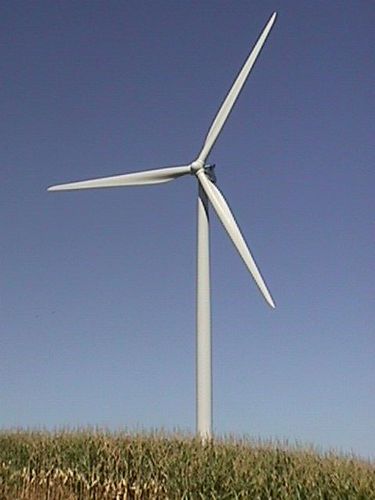(A) Solar energy is used for various things. Solar energy comes from the sun. Once a system is in place to convert the useful sun energy, the fuel is free and will never be subject to the ups and downs of energy markets. It represents a clean alternative to the fossil fuels that currently pollute our air and water, threaten our public health, and contribute to global warming. This resource is poised to play a prominent role on our energy future. Solar energy supports all life on Earth and is the basis for almost every form of energy we use. The amount of energy from the sun that falls on Earth's reserves of coal, oil, and natural gas is matched by the energy from just 20 days of sunshine. The sun's energy contains about 1,300 watts per square meter. About 1/3 of light is reflected back into space, and some is absorbed by the atmosphere. (1) Wind is a form of solar energy. Winds are caused by uneven heating of the atmosphere by the sun. Wind flow patterns are modified by the Earth's terrain, bodies of water, and vegitation. Humans use this wind flow, or motion energy, for many purposes: sailing, flying a kite, and even generating electricity. Wind turbines convert the kinetic energy in the wind into mechanical power. This mechanical power can be used for specific tasks, or a generator can convert this mechanical power into electricity.(2) Hydropower is the renewable energy source that produces the most electricty in the United States. It accounted for 7% of total U.S electricty generation and 35% of generation from renewables in 2009. Hydropower relies on the water cycle. The amount of available energy in moving water is determined by its flow or fall. Fast flowing water in a big river, carries a great deal of energy in its flow. Water descending rapidly from a very high point, also has lots of energy in its flow.(3) Biomass is plant and animal waste. This is the oldest source of renewable energy. The most common way to capture the energy from biomass was to burn it to make heat. It can be converted into liquid fuels to produce combustible gases, which reduces various kinds of emissions from biomass combustion.(4) Fossil Fuels are bad for the environment. The Fossil fuels are a big concern contributing to global warming. These foreign ways of producing energy are hurting our environment.
(B)Energy changes form in many ways. Energy from the sun comes into the Earth's atmosphere. It mostley gets absorbed by the ground. People are making solar panals to catch the sun's power. The power from the sun gets absorbed by the solar panels and is made into electricity. For example, at my house we use a electric fencer for cattle that is powered by a solar panel.
(C) Conduction is the transfer of thermal energy between neighboring molecules in a substance due to a temperature gradient. Heat transfer always goes from a region of higher temperature to a region of lower temperature, and acts to equalize the temperature differences. Convection is the movement of molecules within fluids and "rheids". It cannot take place in solids, since neither bulk current flows nor significant diffusion can take place in solids. Radiation describes a process in which energetic particles or waves travel through a medium or space. (5)

(6)

(7)

(8)
(1) How Solar Energy Works, Clean Energy,
http://www.ucsusa.org/clean_energy/technology_and_impacts/energy_technologies/how-solar-energy-works.html , December 16, 2009
(2)How Wind Turbines Work, Water Power Program,
http://www1.eere.energy.gov/windandhydro/wind_how.html , September 9, 2010
(3) Hydropower Basics, Energy Kids,
http://www.eia.doe.gov/kids/energy.cfm?page=hydropower_home-basics , 2010
(4) Converting Biomass to Biopower, Clean Energy,
http://www.ucsusa.org/clean_energy/technology_and_impacts/energy_technologies/how-biomass-energy-works.html#converting_biomass , October 29, 2010
(5) Convection, Conduction, Radiation, Wikipedia,
http://en.wikipedia.org/wiki/Radiation , November 23, 2010
(6)
http://www.aboutmyplanet.com/files/2009/01/solar_panel.jpg
(7)
http://apps.carleton.edu/reason_package/reason_4.0/www/images/60759.jpg?cb=1155925043
(8)
http://www.solarenergyonline.ca/wp-content/uploads/2010/08/biomass.jpg
 (6)
(6) (7)
(7) (8)
(8)
No comments:
Post a Comment